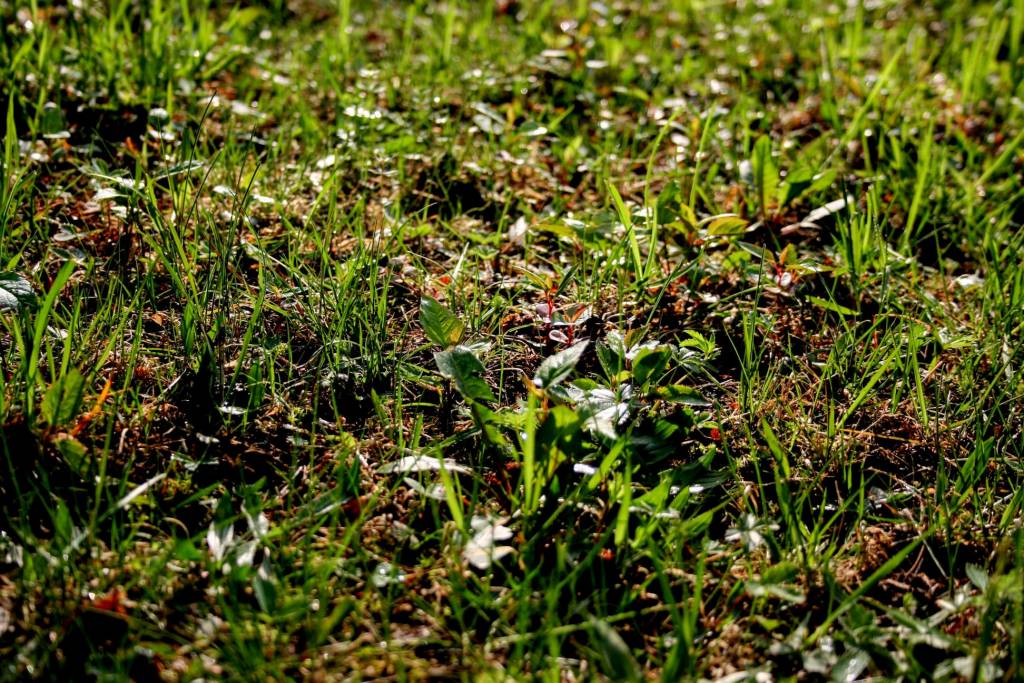Having a beautiful backyard and a driveway surrounded by smooth green grass is every homeowner’s dream. But no matter how finely mowed your lawn is, crabgrass threatens to ruin it all. As a smart homeowner, you must take some time out to get rid of this lawn ruiner, which does more than just making your home look unkempt.
There are a lot of ill effects of crabgrass on your lawn’s health, which eventually impact the value of your home. In this article, we will tell you all about crabgrass, why it is important to get rid of it, and how to get rid of it.
What is crabgrass?

Crabgrass is an annual, low-growing grassy weed that spreads in a crab-like fashion, with stems radiating from a central point. Its flat, wide blades and sprawling stems give lawns a disorganized, weedy appearance. Though native to Europe, crabgrass is common across North America and particularly thrives in thin, dry, or compacted soil.
Unlike your turfgrass, which is perennial, crabgrass completes its lifecycle in one growing season, typically from spring through late summer. Left untreated, a single crabgrass plant can produce up to 150,000 seeds, making it essential to remove before it seeds and spreads further.
Understanding the crabgrass cycle
Crabgrass germinates when soil temperatures consistently exceed 12.8°C (55°F), often in early spring. Its growth peaks in hot, dry summer conditions, and the plant dies with the first frost. However, the seeds it leaves behind will survive winter and germinate the following year.
Crabgrass is especially problematic because it adapts to mowing height and can still produce seeds when cut low. This makes it harder to control once established and underscores the importance of early intervention.

How to Prevent Crabgrass
Prevention is your first and best line of defense against crabgrass. Healthy lawns with thick, well-maintained turf make it difficult for crabgrass seeds to find the light and space they need to germinate.
Here are key prevention strategies:
- Mow at the right height: For most cool-season grasses, maintain a height of 3 inches. For warm-season varieties like zoysia, mow between 1–2 inches. Taller grass shades the soil and makes it harder for crabgrass seeds to take hold.
- Overseed bare spots: Crabgrass often invades where lawn grass is sparse. Overseed thin areas and keep them moist until new grass establishes.
- Apply a pre-emergent herbicide in early spring: Look for a product that targets crabgrass specifically and apply it when soil temperatures approach 12.8°C. Timing is critical—apply too late, and seeds may already have germinated.
- Avoid over-fertilizing in summer: Fertilizing during the heat of summer can encourage crabgrass more than your lawn grass, especially if your soil is already stressed.
How to Get Rid of Crabgrass
If crabgrass has already emerged, a more targeted approach is required. While prevention works at the seed stage, post-emergent methods are needed once the weed is visible.
Manual Removal
For small infestations or early growth:
Hand-pull the plants: Use a weed removal tool to uproot the crabgrass completely, roots and all. Ensure minimal disturbance to the surrounding turf.
Chemical Control
If the infestation is widespread:
Use a post-emergent herbicide: Choose one labeled for crabgrass and safe for your type of lawn grass. Apply when the weed is young and actively growing.
Follow instructions precisely: Water as directed, avoid mowing for a few days post-application, and don’t reapply unless specified.
Repair After Removal
Crabgrass removal often leaves bald patches. Reseed or sod those areas and water consistently until the grass is established. Keeping these spots covered discourages regrowth and strengthens your lawn’s overall resilience.
Lawn Maintenance

Before learning how to get rid of crabgrass, it’s important to understand how to maintain your lawn and keep it free of weeds. There are some simple steps that you can take to make your lawn healthy and free of weed grass. Here are a few ways in which you can do so:
Deep water your lawn: If you deep water your lawn in the early months of spring, it will help keep the soil cool and stop new weed grass saplings from growing.
Mow your lawn regularly: Do not let the grass run wild on your lawn. Mowing the lawn properly keeps the moisture balance and allows the wind to run through soil. This helps in proper maintenance of your lawn and enriches the soil.
Keep your grass green: If your grass has dried out, ensure that you plant fresh grass and maintain the new grass regularly.
FAQs:
Crabgrass thrives in bare soil, heat, poor lawn density, and improper mowing. Drought and over-fertilizing also create ideal conditions.
Apply pre-emergent herbicide in early spring. Use post-emergent treatments in late spring to early summer when weeds are young.
Not directly, but mowing too low weakens turf and helps crabgrass thrive and reseed.
They may burn leaves, but won’t kill roots. They’re unreliable for lasting control.
Yes, the plant dies with frost, but seeds survive and germinate next spring.
